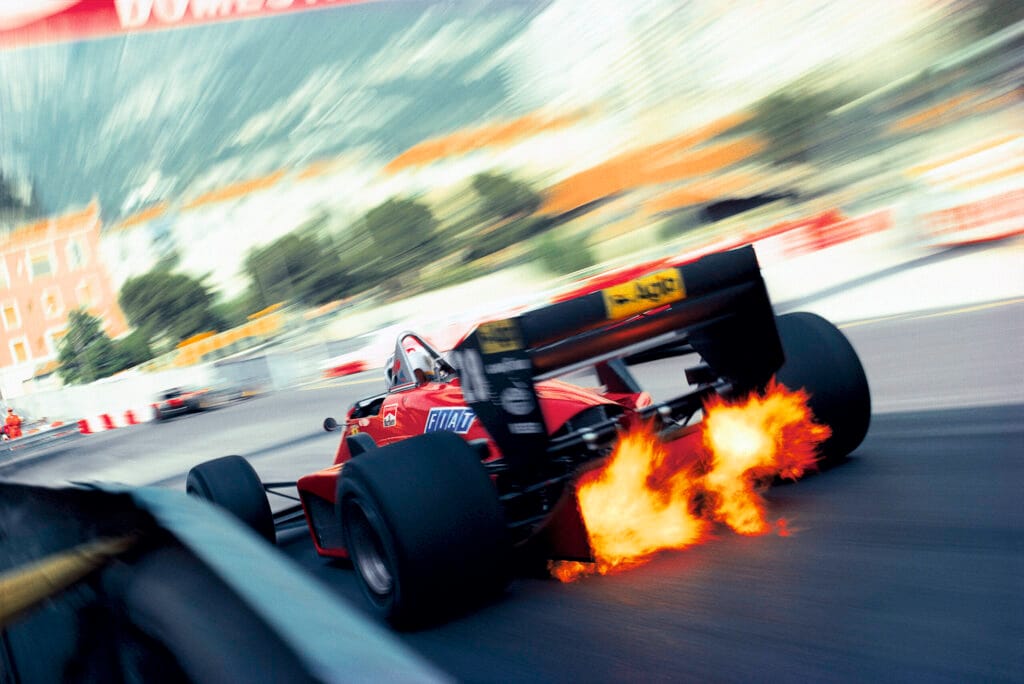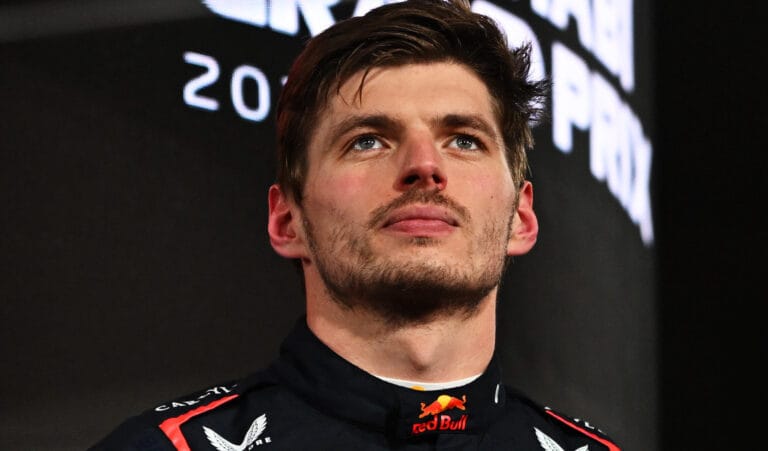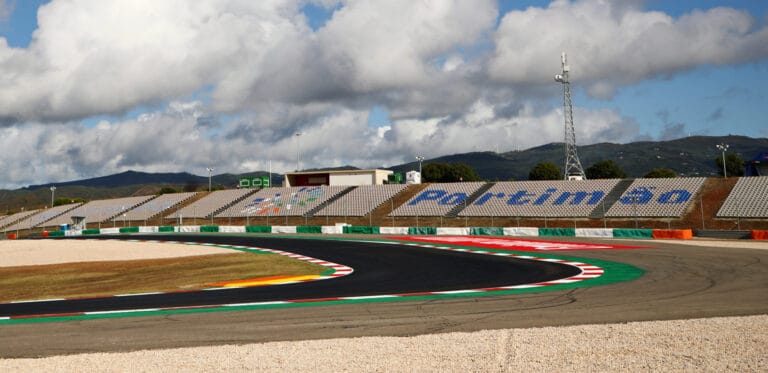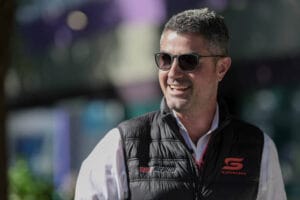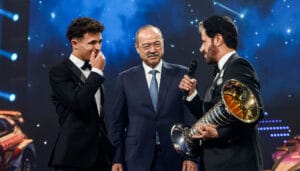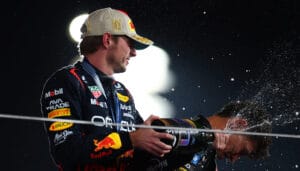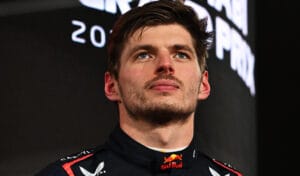To cope with the fatal accident of his good friend and colleague Elio de Angelis in 1986, Formula 1 driver Stefan Johansson unexpectedly began painting. The Swede successfully traded the racetrack for canvas. “Finding the right color: that’s really the hardest part.”
Many motorsport enthusiasts look back nostalgically at the 1980s. The race cars of that time were super fast and dangerous. Think of the Group B monsters from rally racing, the lightning-fast Group C cars, and of course, the turbo cars in F1. “This was the best period in the history of Formula 1,” Johansson reflects enthusiastically. “There was little regulation and from a driver’s perspective, there will never be anything like it again. The cars weighed around 500 kilos and had 1500 horsepower! It was just insane. In Monaco, you had wheel spin in almost every gear and a qualifying round was just a blur.”
Remarkably, compared to the decades before in Formula 1, there were few fatal accidents. Until that fateful test day at Paul Ricard in 1986, when the talented Elio de Angelis tragically lost his life. “I was there with Alain Prost and Jacques Lafitte. We stopped at the accident and ran to his car. But it was on fire, we could do nothing. That affected me deeply and I struggled with it. Strangely enough, that got me into painting. Don’t ask me why, because I had nothing to do with painting. But I suddenly decided to buy a canvas, paint, and brushes. I wanted to do something in memory of Elio.”
Johansson says he was struck by lightning and a new world opened up for him. Since then, he has not stopped painting. The Swede has since developed into a renowned artist and has studios in California and London. “I can almost make a living from it now, but that’s not the goal. It’s more about the pleasure I get from it. You get into a wonderful state of mind, it’s almost a therapeutic process. And above all, if you can do what you like every day, then that’s not a bad way to lead your life, right?”
Fellini Film
As an artist, one must primarily draw from one’s imagination, and Johansson certainly does. He vividly and animatedly recounts his time in F1, such as how his unexpected deal with Ferrari came about. Looking back at the early stages of his Formula 1 career, which started with many bumps in the road, this was far from expected. Until his famous rain race in Portugal in 1984, when he was a teammate of a Brazilian newcomer, one Ayrton Senna at Toleman. “During this last race of the season, I had a big fight on the track with Niki Lauda. I think Enzo Ferrari was watching the race on TV, because I received a call a week later with compliments from Maranello.”
This quickly led to a follow-up when Ferrari abruptly dismissed René Arnoux at the beginning of the next season. Johansson was immediately invited for a secret meeting in the old factory in Modena. “I walked through the building and there were cars covered with white sheets. Then I went through a corridor with photos of my heroes: Moss, Nuvolari, Fangio, you name it. Then I entered a rather dark office and there was Enzo. Because the dim sunlight was coming in from behind, you could only see his silhouette from behind the desk. It was like the set of a Federico Fellini film!”
Alongside Enzo and his son Pierro, Marco Piccinini, the sporting director, was also present. The trio conversed back and forth in Italian, until Enzo turned to Johansson and asked him a question. Piccinini quickly translated it to: ‘Are you hungry?’ The applicant assumed it was not about food and cleverly replied: ‘I have never been so hungry in my life’. Ferrari shook his hand and hired him. “It was almost surreal and it took a while for it to sink in. This moment changed my life and the rest is history.”
Ferrari’s Strong Season: A Chance for Johansson
Ferrari is performing strongly this season, providing Johansson with the perfect opportunity to finally prove himself in Formula 1. In his second race, the San Marino Grand Prix in Imola, he nearly clinches victory. He even takes the lead in the Ferrari, sending the tifosi (Ferrari fans) into a frenzy of joy. Unfortunately, like many others in that race, the Swede ends up on the sidelines with an empty fuel tank. Despite Ferrari’s good form dipping midway through the season, he gets two more chances to win that year.
“I should have won in Montreal, but I received team orders to stay behind my teammate Michele Alboreto. I was also on course for P1 in Detroit, but my brake disc exploded in the final lap. Under normal circumstances, I would have won those three races, which would have drastically changed everything. I would have been the one leading the world championship. Well, that’s how things go,” he says, sounding resigned.
Creative Overlaps
Although it might not seem obvious at first, Johansson believes there are many overlaps between racing and painting. “I’m not talking about the physical aspect, but the mental one. A lot of creativity is involved in qualifying or determining race strategy. You have to improvise, all your senses are on high alert, and your brain processes all this in a certain way to get you where you want to be. When I’m working on a canvas, it works exactly the same way.”
Johansson has a point, especially when you look back at his very creative approach during the 1989 Portuguese Grand Prix. With the new team Onyx, he spends that season in the backfield. With the large starting field at the time, it’s already a given that they won’t finish in the points. But then he and the tire experts from Goodyear come up with a plan. By preparing the tires he wants to use for the race in a certain way over the weekend, it should be possible to skip the pit stop altogether.
The plan seems to be working and Johansson moves up. As the competition goes in for a pit stop, the Swede suddenly finds himself in third place in the final stages. “With ten laps to go, it was a nail-biting moment. My left front tire was completely worn out. So much so that you could see the steel carcass and sparks were flying off in the long right turn. I was fervently hoping that the tire would hold, otherwise, I would crash hard. But the plan worked and I finished third, in an Onyx!”
However, due to the worn tires and empty fuel tank, the car has become so light that it’s on the verge of the minimum weight. “It was touch and go, but my good friend Charlie Whiting, God rest his soul, leaned his knee on the scale and said, ‘Yes, it’s good!’ Yes, those were good times, and things were a bit different back then, haha.”
Mentors
Now 68 years old, Johansson has more than made his mark in both motorsport and painting. He identifies two individuals who have taught him the most in these respective fields. In motorsport, it was Prost, his teammate at McLaren in 1987, who opened his eyes. “In my opinion, he is by far the best driver of that generation. And I’m not just talking about racing, but everything that surrounds it. I learned more from him in that one year than in my entire career. And I think Senna discovered the same when he took my place there in 1988. Of course, Senna was super fast, but I don’t think he had any idea of the completeness of Prost as a driver. How do you deal with the car, the team, the competition? As a professional driver, racing is almost the easiest part of your job. It’s all the other aspects you have to deal with that make the difference between becoming world champion or not.”
Before he mentions the mentor of his current profession, he proudly shows his business card. It features a logo designed by the famous Keith Haring. “I got to know him in the 80s. Keith and I had mutual friends when I lived in Monaco, as he spent his summers there. We became good friends and I learned from him, even though his style is very different from mine.”
But the Prost of painting for him has been James Rosenquist. The American is a big name in the pop art scene. He became famous for his painting of over 26 meters depicting a life-size F111 jet. “I often hung out with him and regularly visited him at his home in Florida. He taught me the art of mixing colors. Because that’s really the hardest part: finding the right color. He taught me the fundamental principles and trained me to have an eye for getting your idea onto the canvas. And that you should also develop a unique and personal style. Not what you see nowadays with all those copycats in the art galleries.”
Broadly speaking, Johansson employs three core styles. The first is realistic, often in the form of a portrait, overlaid with a large quote. The second style is ‘Memories of a Past Life’: abstract paintings where the colors come at you from the center, symbolizing a driver’s field of vision. Finally, his most popular style is centered around pointillism. Using color dots, he adds ‘energy and intensity’ to racing cars.
“Just like in racing, you have to deal with all sorts of challenges,” Johansson explains his approach with the brush. “How do you deal with certain materials, how do you mix a certain color, how do you reach your end goal? But having an artwork in your head is one thing, actually getting it onto the canvas is quite another. Sometimes it’s really a trial. But once you succeed, a world opens up and it comes to life.”


